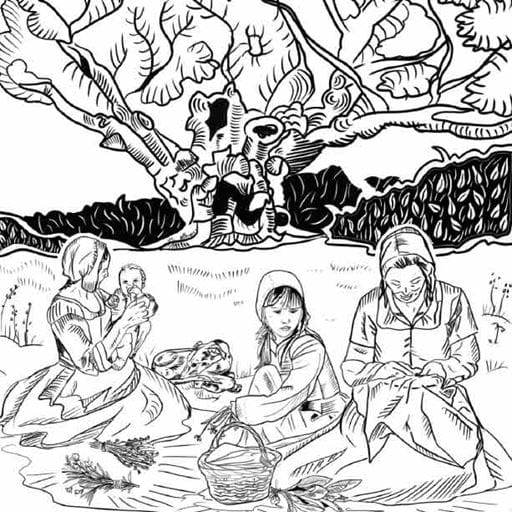Professor Rowlands was historical adviser on the Revisiting the Essex Witch Trials walking tour which has been created by the Snapping the Stiletto initiative.
As well as taking in sites in and around Manningtree and Mistley, the tour features stories and poems, written by local women from the perspective of the 36 victims of the Essex witch-trials.
At each of the 12 stops on the trail there is also a QR code which visitors can use to view a unique piece of augmented reality art, created by digital artist Sian Fan and inspired by the creative writing pieces written for the trail.
Professor Rowlands, from the Department of History, explained why Manningtree is such a significant place in the history of witch-hunting: “Manningtree was the place where the largest and most infamous episode of witch-prosecution in English history began in 1645, before spreading to other eastern counties. In 1645 it was also the home of Matthew Hopkins and John Stearne who became known as the witch-finders.”
Crucially though the project focuses on the accused women, shifting the focus from the male witch-finders.
“I wanted to be involved because this project offered the opportunity to commemorate the witch-trials from the perspective of the women accused, tried and sadly often executed. Thinking about the women accused of witchcraft in 1645 made us realise they were individuals with emotions and aspirations, just like us. Their stories remind us of what can happen when neighbour turns against neighbour and when the law allows for ‘unfair’ trials,” Professor Rowlands said.
As well as providing historical advice, Professor Rowlands also took part in the creative writing workshops, led by author Syd Moore, and wrote her own pieces for the trail.
“I think that empathy and imagination are essential for historians to try to understand people in the past, so the use of creative writing to imagine the women and their lives was very exciting. I found it hugely rewarding,” she said.
Although there are few buildings or sites in Manningtree and Mistley which can be linked with certainty to the witch-trials, the trail takes in green spaces between the two communities and offers poignant opportunities for reflection.
“For me the most evocative stopping point is the Mistley railway underpass. Standing under the cold stone on a gloomy wet day when planning the trail helped me imagine the hopelessness and fear of the women after they’d been arrested and gaoled; the fact that you could see green fields from one side may have signalled a bit of hope for the future.”
Maps of the trail are available from Manningtree Library.
Header image by artist Alison Tew, as used on the trail pamphlet which is designed by Gemma Garwood

.jpg?mh=500&mw=500&hash=6568B6C9CCF5290A596BEF6678B6AD0E)




